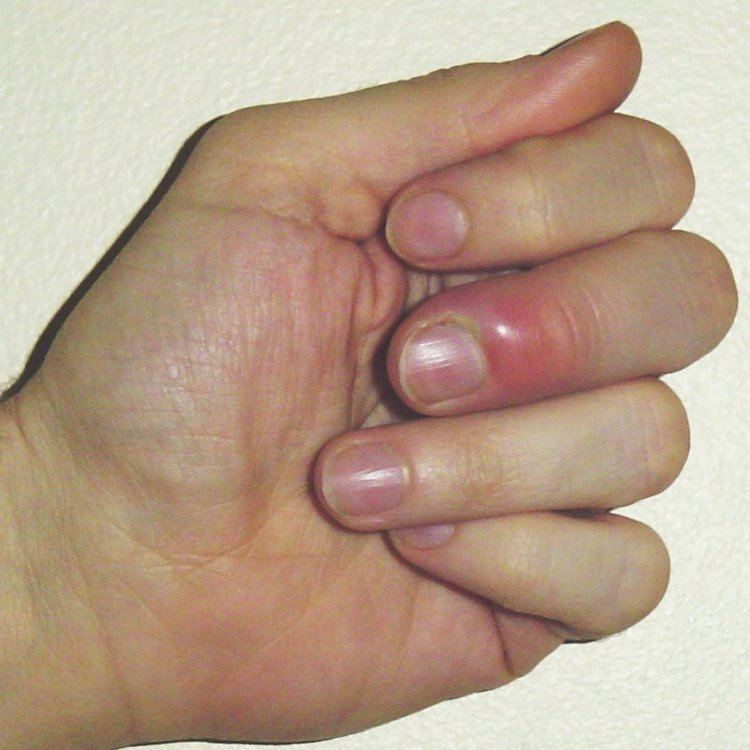ICD-10 L03.0 DiseasesDB 9663 eMedicine derm/798 | ICD-9-CM 681.02, 681.11 MedlinePlus 001444 | |
 | ||
Specialty | ||
A paronychia (/ˌpærəˈnɪkiə/; Greek: παρωνυχία from para, "around" and onukh-, "nail") is a nail disease that is an often-tender bacterial or fungal infection of the hand or foot where the nail and skin meet at the side or the base of a finger or toenail. The infection can start suddenly (acute paronychia) or gradually (chronic paronychia). Paronychia is commonly misapplied as a synonym for whitlow or felon.
Contents
Signs and symptoms
The skin typically presents as red and hot. These infections can be painful.
Pus is usually present, along with gradual thickening and browning discoloration of the nail plate.
Cause
Acute paronychia is usually caused by bacteria. Claims have also been made that the popular acne medication, isotretinoin, has caused paronychia to develop in patients. Paronychia is often treated with antibiotics, either topical or oral. Chronic paronychia is most often caused by a yeast infection of the soft tissues around the nail but can also be traced to a bacterial infection. If the infection is continuous, the cause is often fungal and needs antifungal cream or paint to be treated.
Risk factors include repeatedly washing hands and trauma to the cuticle such as from biting. In the context of bartending, it is known as bar rot.
Herpes whitlows are frequently found among dentists and dental hygienists. Prosector's paronychia is a primary inoculation of tuberculosis of the skin and nails, named after its association with prosectors, who prepare specimens for dissection. Paronychia around the entire nail is sometimes referred to as runaround paronychia.
Painful paronychia in association with a scaly, erythematous, keratotic rash (papules and plaques) of the ears, nose, fingers, and toes, may be indicative of acrokeratosis paraneoplastica, which is associated with squamous cell carcinoma of the larynx.
Paronychia can occur with diabetes, drug-induced immunosuppression, or systemic diseases such as pemphigus.
Types
Paronychia may be divided as follows:
Alternatively, paronychia may be divided as follows:
Treatment
When no pus is present warm soaks for acute paronychia is reasonable, even though there is a lack of evidence to support its use. Antibiotics such as clindamycin or cephalexin are also often used, the first being more effective in areas where MRSA is common. If there are signs of an abscess (the presence of pus) drainage is recommended.
Chronic paronychia is treated by avoiding whatever is causing it, and applying a topical antifungal and a topical steroid. In those who do not improve following these measures oral antifungals and steroids may be used or the nail fold may be removed surgically.
